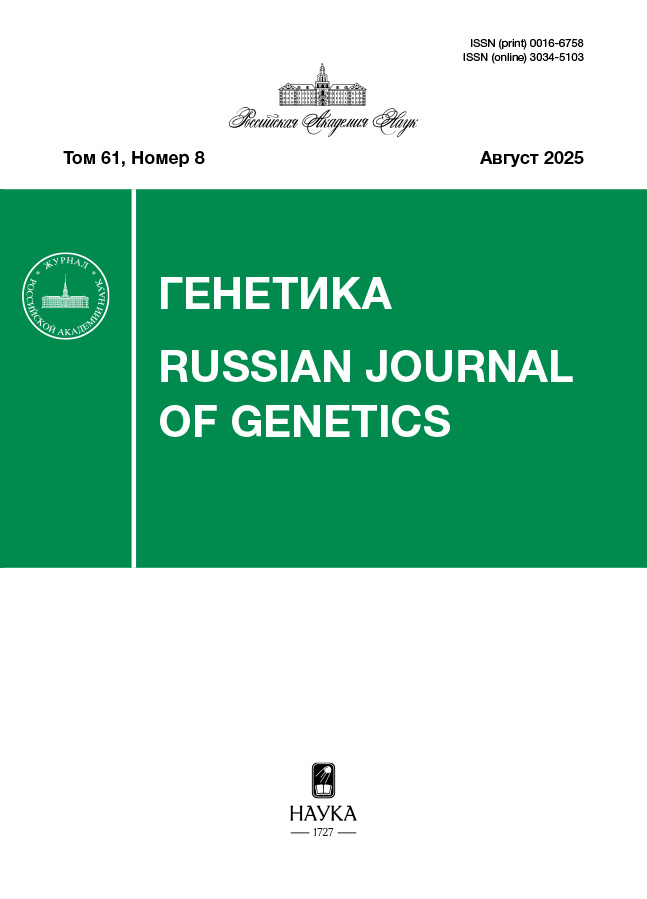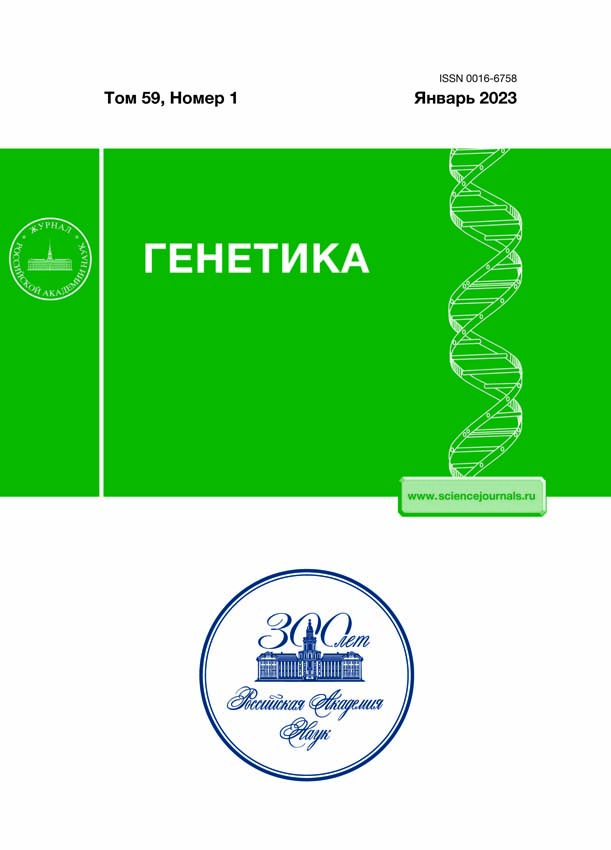Маркеры хлоропластной ДНК в исследовании филогеографии робуроидных дубов (Quercus L. секции Quercus, Fagaceae) крымско-кавказского региона
- Авторы: Семерикова С.А.1
-
Учреждения:
- Институт экологии растений и животных Уральского отделения Российской академии наук
- Выпуск: Том 59, № 1 (2023)
- Страницы: 50-64
- Раздел: ГЕНЕТИКА РАСТЕНИЙ
- URL: https://cardiosomatics.ru/0016-6758/article/view/666908
- DOI: https://doi.org/10.31857/S0016675823010095
- EDN: https://elibrary.ru/CNHMLD
- ID: 666908
Цитировать
Полный текст
Аннотация
Исследована изменчивость пяти участков хлоропластной ДНК (ASq, CDq, TFq, trnH-psbA и trnK-matK) общей длиной более 10 000 пн у трех видов робуроидных дубов крымско-кавказского региона (Q. robur, Q. petraea, Q. pubescens). Всего у 290 особей из 20 популяций обнаружено 11 гаплотипов, 10 из которых отличались от гаплотипов восточноевропейской части ареала. Полученные результаты показывают выраженную структуру географического распределения гаплотипов робуроидных дубов в Крыму и на Кавказе и принадлежность хлоропластных гаплотипов региона к нескольким дивергентным филогенетическим линиям. Проведено сравнение с данными других исследований, с оценкой степени эффективности использования разных хлоропластных регионов и маркеров. Обособленное филогенетическое положение гаплотипов крымско-кавказских популяций и значительное отличие от гаплотипов более северной части ареала позволяет сделать заключение об исторически длительном изолированном существовании робуроидных дубов на Кавказе и в Крыму. В то же время наличие общих гаплотипов указывает на тесные исторические связи крымско-кавказских популяций с Малой Азией и с Балканами. Все гаплотипы выявляются тремя фрагментами (ASq, CDq и TFq), с достаточным уровнем изменчивости и пригодными для решения задач филогеографии дубов в крымско-кавказском регионе. Маркеры trnH-psbA и trnK-matK имели низкий уровень изменчивости и не выявили дополнительных гаплотипов. Предложены оптимизированные варианты генотипирования, включающие как поэтапное секвенирование, так и предполагающие сочетание анализа микросателлитных локусов хлоропластной ДНК (cpSSR), рестриктного анализа (PCR-RFLP) и секвенирования. Для оценки изменчивости маркеров в большем таксономическом диапазоне в анализ были включены представители других секций рода Quercus. Показано, что специфичные для дуба праймеры, предложенные для фрагментов ASq, CDq и TFq, пригодны для видов других секций.
Об авторах
С. А. Семерикова
Институт экологии растений и животных Уральского отделенияРоссийской академии наук
Автор, ответственный за переписку.
Email: s.a.semerikova@ipae.uran.ru
Россия, 620144, Екатеринбург
Список литературы
- Kremer A., Hipp A.L. Oaks: an evolutionary success story // New Phytologist. 2020. V. 226. № 4. P. 987–1011. https://doi.org/10.1111/nph.16274
- Denk T., Grimm G.W., Manos P.S. et al. An updated infrageneric classification of the oaks: Review of previous taxonomic schemes and synthesis of evolutionary patterns // Oaks Physiological Ecology. Exploring the Functional Diversity of Genus Quercus L. / Eds Gil-Pelegrin E., Peguero-Pina J.J., Sancho-Knapik D. Cham, Switzerland: Springer, 2017. V. 7. P. 13–38.
- Hipp A.L., Manos P.S., Hahn M. et al. Genomic landscape of the global oak phylogeny // New Phytologist. 2020. V. 226. № 4. P. 1198–1212. https://doi.org/10.1111/nph.16162
- Тахтаджян А.Л. Флористические области Земли. Л.: Наука, Ленингр. отд., 1978. 247 с.
- Конспект флоры Кавказа: в 3 томах / Под ред. Кудряшовой Г.Л., Татанова И.В. СПб.; М.: Тов-во науч. изданий КМК, 2012. Т. 3. Ч. 2. 623 с.
- Ена А.В. Природная флора Крымского полуострова. Симферополь: Н. Орiанда, 2012. 232 с.
- Shatilova I., Mchedlishvili N., Rukhadze L., Kvavadze E. The history of the flora and vegetation of Georgia (South Caucasus). Tbilisi: Georgian National Museum, Institute of Paleobiology, 2011. 200 p.
- Cordova C.E., Gerasimenko N.P., Lehman P.H., Kliukin A.A. Late Pleistocene and Holocene paleoenvironments of Crimea: pollen, soils, geomorphology, and geoarchaeology // Geology and Geoarchaeology of the Black Sea Region: Beyond the Flood Hypothesis / Eds Buyne-vich I.V., Yanko-Hombach V., Gilbert A.S., Martin R.E. Book series: Geological Society of America Special Paper. 2011. V. 473. P. 133–164. https://doi.org/10.1130/2011.2473(09)
- Меницкий Ю.Л. Дубы Азии. Л.: Наука, 1984. 315 с.
- Семериков Л.Ф. Популяционная структура древесных растений (на примере видов дуба европейской части СССР и Кавказа). М.: Наука, 1986. 140 с.
- Dumolin-Lapegue S., Demesure B., Fineschi S. et al. Phylogeographic structure of white oaks throughout the European continent // Genetics. 1997. V. 146. № 4. P. 1475–1487.
- Petit R.J., Csaikl U.M., Bordacs S. et al. Chloroplast DNA variation in European white oaks – phylogeography and patterns of diversity based on data from over 2600 populations // Forest Ecol. Management. 2002. V. 156. № 1–3. P. 5–26. https://doi.org/10.1016/S0378-1127(01)00645-4
- Petit R.J., Brewer S., Bordacs S. et al. Identification of refugia and postglacial colonisation routes of European white oaks based on chloroplast DNA and fossil pollen evidence // Forest Ecol. Management. 2002. V. 156. P. 49–74. https://doi.org/10.1016/S0378-1127(01)00634-X
- Bordacs S., Popescu F., Slade D. et al. Chloroplast DNA variation of white oaks in northern Balkans and in the Carpathian Basin // Forest Ecol. Management. 2002. V. 156. № 1–3. P. 197–209. https://doi.org/10.1016/S0378-1127(01)00643-0
- Slade D., Skvorc Z., Ballian D. et al. The chloroplast DNA polymorphisms of white oaks of section Quercus in the Central Balkans // Silvae Genetica. 2008. V. 57. № 4–5. P. 227–234. https://doi.org/10.1515/sg-2008-0035
- Curtu A.L., Sofletea N., Toader A.V., Enescu M.C. Leaf morphological and genetic differentiation between Quercus robur L. and its closest relative, the drought-tolerant Quercus pedunculiflora K. Koch. // Annals Forest Science. 2011. V. 68. № 7. P. 1163–1172. https://doi.org/10.1007/s13595-011-0105-z
- Moldovan I.C., Sofletea N., Curtu A.L. et al. Chloroplast DNA diversity of oak species in Eastern Romania // Not. Bot. Hort. Agrobot. Cluj. 2010. V. 38. Iss. 3. P. 302–307.
- Ekhvaia J., Simeone M.C., Silakadze N., Abdaladze O. Morphological diversity and phylogeography of the Georgian durmast oak (Q. petraea subsp iberica) and related Caucasian oak species in Georgia (South Caucasus) // Tree Genet. Genom. 2018. V. 14. № 2. https://doi.org/10.1007/s11295-018-1232-6
- Tekpinar A.D., Aktas C., Kansu C. et al. Phylogeography and phylogeny of genus Quercus L. (Fagaceae) in Turkey implied by variations of trnT((UGU))-L-(UAA)-F ((GAA)) chloroplast DNA region // Tree Genet. Genom. 2021. V. 17. Iss. 5.https://doi.org/10.1007/s11295-021-01522-x
- Семерикова С.А., Исаков И.Ю., Семериков В.Л. Изменчивость хлоропластной ДНК и филогеография дуба черешчатого Quercus robur L. в восточной части ареала // Генетика. 2021. Т. 57. № 1. С. 56–71. https://doi.org/10.31857/S0016675821010136
- Degen B., Yanbaev Y., Mader M. et al. Impact of gene flow and introgression on the range wide genetic structure of Quercus robur (L.) in Europe // FORESTS. 2021. V. 12. Iss. 10.https://doi.org/10.3390/f12101425
- Simeone M.C., Piredda R., Papini A. et al. Application of plastid and nuclear markers to DNA barcoding of Euro-Mediterranean oaks (Quercus, Fagaceae): problems, prospects and phylogenetic implications // Bot. J. Linn. Soc. 2013. V. 172. Iss. 4. P. 478–499. https://doi.org/10.1111/boj.12059
- Piredda R., Simeone M.C., Attimonelli M. et al. Prospects of barcoding the Italian wild dendroflora: oaks reveal severe limitations to tracking species identity // Mol. Ecol. Resources. 2011. V. 11. Iss. 1. P. 72–83. https://doi.org/10.1111/j.1755-0998.2010.02900.x
- Taberlet P., Gielly L., Pautou G., Bouvet J. Universal primers for amplification of 3 non-coding regions of chloroplast DNA // Plant Mol. Biology. 1991. V. 17. № 5. P. 1105–1109. https://doi.org/10.1007/BF00037152
- Demesure B., Sodzi N., Petit R.J. A set of universal primers for amplification of polymorphic noncoding regions of mitochondrial and chloroplast DNA in plants // Mol. Ecol. 1995. V. 4. № 1. P. 129–131. https://doi.org/10.1111/j.1365-294X.1995.tb00201.x
- Devey M.E., Bell J.C., Smith D.N. et al. A genetic linkage map for Pinus radiata based on RFLP, RAPD and microsatellite markers // Theor. Appl. Genet. 1996. V. 92. № 6. P. 673–679. https://doi.org/10.1007/BF00226088
- Hall T.A. BioEdit: A user-friendly biological sequence alignment editor and analysis program for Windows 95/98/NT // Nucl. Acids Symp. Series. 1999. V. 41. P. 95–98.
- Ronquist F., Huelsenbeck J.P. MrBAYES 3: Bayesian phylogenetic inference under mixed models // Bioinformatics. 2003. V. 19. № 12. P. 1572–1574. https://doi.org/10.1093/bioinformatics/btg180
- Swofford D.L. PAUP*. Phylogenetic analysis using parsimony (* and other methods). Version 4.0 beta10. Sunderland: Sinauer Associates, Massachusetts, 2002.
- Семерикова С.А., Исаков И.Ю., Семериков В.Л. Изменчивость хлоропластной ДНК отражает историю Tilia cordata s. l. в восточной части ареала // Генетика. 2020. Т. 56. № 2. С. 188–200. https://doi.org/10.1134/S0016675820020113
- https://quercusportal.pierroton.inra.fr/index.php?p= GENOMIC_SEQ
- Sork V.L., Fitz-Gibbon S.T., Puiu D. et al. First draft assembly and annotation of the genome of a California endemic oak Quercus lobata Nee (Fagaceae) // G3: Genes Genomes Genetics. 2016. V. 6. № 11. P. 3485–3495. https://doi.org/10.1534/g3.116.030411
- Pham K.K., Hipp A.L., Manos P.S., Cronn R.C. A time and a place for everything: Phylogenetic history and geography as joint predictors of oak plastome phylogeny // Genome. 2017. V. 60. № 9. P. 720–732. https://doi.org/10.1139/gen-2016-0191
- Librado P., Rozas J. DnaSP v5: A software for comprehensive analysis of DNA polymorphism data // Bioinformatics. 2009. V. 25. № 11. P. 1451–1452. https://doi.org/10.1093/bioinformatics/btp187
- Deguilloux M.F., Dumolin-Lapegue S., Gielly L. et al. A set of primers for the amplification of chloroplast microsatellites in Quercus // Mol. Ecol. Notes. 2003. V. 3. № 1. P. 24–27. https://doi.org/10.1046/j.1471-8286.2003.00339.x
- Simeone M.C., Grimm G.W., Papini A. et al. Plastome data reveal multiple geographic origins of Quercus Group Ilex // Peer. J. 2016. V. 4. Article number 40e1897. https://doi.org/10.7717/peerj.1897
- Curtu A.L., Gailing O., Finkeldey R. Evidence for hybridization and introgression within a species-rich oak (Quercus spp.) community // BMC Evolutionary Biology. 2007. V. 7. Article number 218. https://doi.org/10.1186/1471-2148-7-218
- Degen B., Blanc-Jolivet C., Bakhtina S. et al. Applying targeted genotyping by sequencing with a new set of nuclear and plastid SNP and indel loci for Quercus robur and Quercus petraea // Conserv. Genet. Resour. 2021. V. 13. P. 345–347. https://doi.org/10.1007/s12686-021-01207-6
Дополнительные файлы













